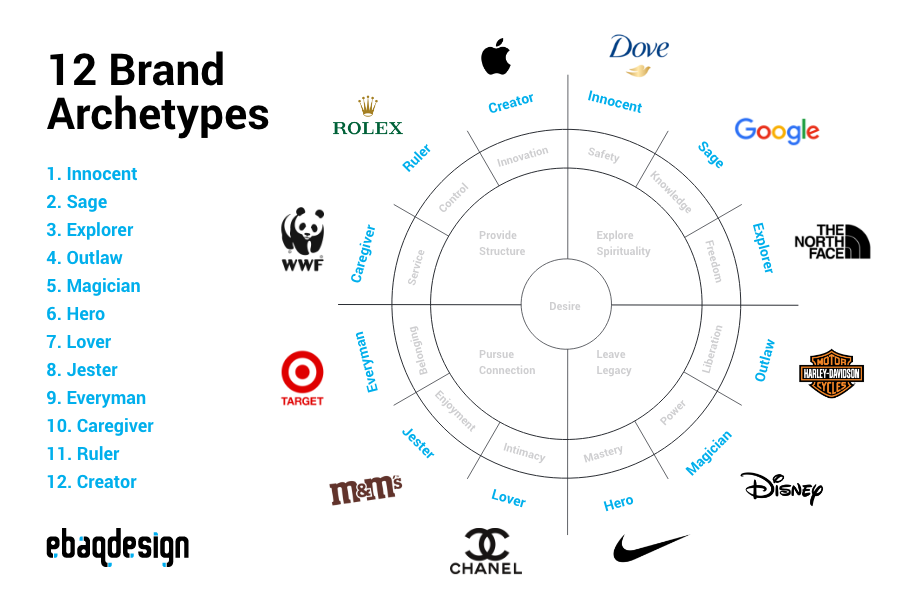
Marketing is more than simply showcasing an image with a catchy slogan. Brands do a great deal of research into the psychology of their brand presentation. Marketing departments build product personalities and use brand archetypes to increase sales. They know that human beings tend to describe objects using human traits and characteristics. People do this for new products as a way to associate them with specific qualities. By studying this psychology, your marketing team can develop a plan that elicits the desired response.
Learning how to impact a person's emotional buttons creates a response, and most businesses strive to turn that response into a sale.
Do you have an understanding of the meaning of product personality? Product personality is defined as the human characteristics that consumers subconsciously attribute to a product. When individuals attempt to describe a specific product, they do so with perceived personality traits. Though it is an inanimate object, consumers tend to depict products as having human qualities.
Individual product personality is different from what marketers refer to as brand personality.
Brand personality, or human attributes associated with a brand, is developed from the characteristics of the product. This makes it a crucial tool to capture and direct attention to the brands. There are five dimensions of brand personality.
Consumers associate specific personality traits with a brand through the personalities it uses to represent the company. They also indirectly relate other intrinsic cues and sensory information to the human qualities of a product.
A real-world example of how one of these five dimensions can be perceived and associated with a brand is found in Virgin Galactic and Richard Branson. Outside of his entrepreneurial achievements, Richard Branson portrays his image to the public as a rugged adventurer. And this personality is directly associated with the efforts of Virgin Galactic. While many are interested in space travel, the Virgin Galactic brand is associated with the ‘adventure’ versus how NASA’s space travel is seen as ‘scientific.’
While product personality can reflect on the brand, a brand can produce different products with different personalities. For example, Volkswagen is a brand with two products that visually connect with customers in different ways. On the one hand, customers often characterize the Volkswagen Beetle as cheerful and friendly. On the other hand, customers refer to the Touareg as tough and dominating. Both are a reflection of Volkswagen but have opposite personalities.
Most successful brands you can think of use product personality. Coca-Cola Bottling Company is an example of a brand that has successfully added product personality to an everyday item for many years. As you read about the different advertising campaigns used by this brand, consider how product personality and consumer behavior are interlinked. Ask yourself how the marketing strategy made you feel about their product. What personality traits do you assign to their product? How did the personality of the product change over time?
Let’s take a look at Coca-Cola Bottling Company.
Remember that most campaigns are more than the slogan. Product images and personality traits assigned to these products interact to complete a visual of the feeling associated with their product.
Carl Jung presented the concept of archetypes in the early part of the 20th century. Archetypes are universal human traits or inborn personality models that influence the way a human behaves or reacts. Jung suggested that all humans have innate tendencies that impact behavior.
He divided these traits or characteristics into twelve archetypes. These traits are often demonstrated on what is known as an archetype wheel. Knowledge of the different human personalities and behavioral responses influence movies, books, politics, and even product branding.

Via Medium.com
When it comes to luxury brand archetypes, the branding strategy usually focuses on presenting and appealing to a single archetype. Images that archetypes use are the characters in the brand's story, and how we see their symbolism or personality causes an emotional reaction. The above wheel graphic demonstrates the twelve archetypes and their meanings. Can you think of a luxury brand for each type?
To better demonstrate the connection between archetype and brand, here is a list of the twelve archetypes and a well-known luxury brand associated with each one.
Once you’ve nailed down your brand’s product personalities, product personalization can help strengthen them. Allowing customers to personalize and customize your products enables them to take on the product personality on an even deeper level. And this, in turn, helps create more long-lasting and loyal bonds between your customers and the brand.
ConfigureID offers a premium product personalization platform to many world's top retail brands. It empowers brands to offer limitless product personalization options with 2D or 3D visualization on their ecommerce sites.
Request a demo now to learn how you can leverage product personalization to take product personality and your brand to the next level.